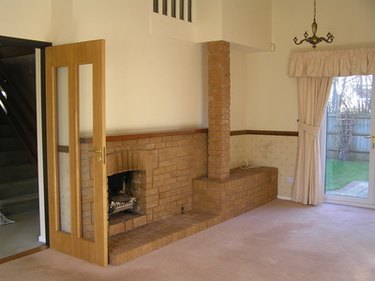
Having new carpet installed should be an exciting time, with new, clean flooring to brighten up a home. For many consumers, though, it’s turned into a nightmare of skin rashes and sinus problems. Studies haven’t found conclusive answers for the problem yet, but a few theories and tips can help protect buyers.
Identification
Video of the Day
The Consumer Product Safety Commission (CPSC) has registered over 500 complaints from consumers about health problems related to new carpet installations. These complaints include rashes on the skin as well as watery eyes, runny nose, a burning sensation in the nasal passages, headaches and fatigue. About half those complaining reported they hadn’t had previous allergy trouble.
Video of the Day
Theories/Speculation
CPSC studies haven’t found proof of a specific chemical responsible for new carpet rashes and other health problems. The theory, however, is that 4-phenyl cyclohexene (4-PC) may cause most of the trouble. 4-PC is a byproduct of styrene butadiene rubber, which is used in most carpet backing materials and is a known skin, nose and eye irritant. No one is sure why some people are affected and others aren’t.
Prevention/Solution
According to the CPSC, a few precautions make new carpet installation safer. Talk to the installer about using green label carpet, low-emitting adhesives and following industry installation guidelines. Ask the installer to unroll the carpet in another area and let it air out before bringing it into the home. Use fans and open windows to ventilate the area of carpet installation, both during installation and for two to three days afterward. Leave the home during installation, and follow all manufacturer’s guidelines for new carpet maintenance. If odors continue after a few days, contact the carpet retailer.
Considerations
Many parents think carpet is the best flooring choice for a home with children, since children spend so much time on the floor and need a soft surface. However, a child's small size and undeveloped immune system may make him more susceptible to new carpet chemicals and allergens trapped in carpet fibers. Hard floors covered with rugs that can be removed for thorough cleaning may be a better choice.
Warning
For someone who is susceptible to allergies, carpet may not be the best flooring choice even after the new carpet fumes dissipate. Carpet fibers trap household dust, which may contain dust mites, pesticides, cleaning chemicals or lead. Some of this dust remains in the carpet even with regular vacuuming, and it can aggravate allergies or asthma. Allergy sufferers may be happier with hardwood or laminate flooring.